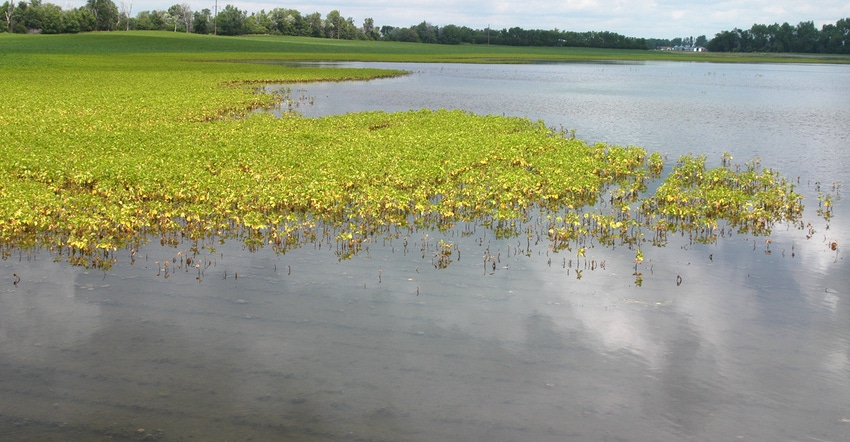April 13, 2017

If the 2017 growing season is like many recently, you can expect there will be some big rains somewhere in the Dakotas during the early part of the growing season.
That may create some big worries about crop conditions and fertilizer loss.
Here’s what you can expect:
Generally, the oxygen level in a saturated soil reaches the point that is harmful to plant growth after about 48 to 96 hours, says Joel Ransom, North Dakota State University Extension cereals specialist.
Crops are more sensitive to waterlogging when they are still below the surface of the soil. In cases where the crops have fully canopied, evapotranspiration should hasten the elimination of excess moisture.
Waterlogged conditions also reduce root growth and can predispose the plant to root rots, so the ultimate effect of excess moisture may not be known until late in the season, he says.
“It is common to observe plants that have experienced waterlogging to be especially sensitive to hot temperatures and to display nitrogen and phosphorus deficiencies later in the season due to restricted root development. Waterlogging can also impact the availability of nitrogen in the soil. Excessive water can leach nitrate nitrogen beyond the rooting zone of the developing plant, particularly in well-drained lighter textured soils. In heavier North Dakota state soils, nitrate nitrogen can be lost through denitrification. Research conducted in other states found losses from denitrification between 1% and 5% for each day that the soil remains saturated.”
Nitrogen loss in high-clay soils averages about 1.5% nitrate N per day under saturated soil conditions, says Dave Franzen, NDSU Extension soil specialist.
Corn may yellow on the bottom, with symptoms similar to N deficiency. If corn is in the V6-V8 stages of growth, there is still time for it to recover. If the nitrate has simply moved below the present rooting depth, the roots could catch up to it later on.
“It is important to wait a few days for the field to dry somewhat and the water content of the soil to lower. When this happens, some of the corn will begin to green up again. Corn that does not green up may need a late sidedress application, either by streaming UAN/ATS [solution of urea and ammonium nitrate in water, with ammonium thiosulfate] between the rows, or applying up to 46 pounds of N per acre as urea treated with a nitrogen stabilizer with NBPT [the active ingredient], such as Agrotain or Limus over the top. If sulfur is also suspected to be a problem due to leaching, 10 pounds S per acre as ammonium sulfate can also be applied over the top,” he says.
To confirm N or S deficiency, pull soil samples from where the corn is green and compare the results to samples taken from areas where the corn has yellowed, he suggests.
You May Also Like




